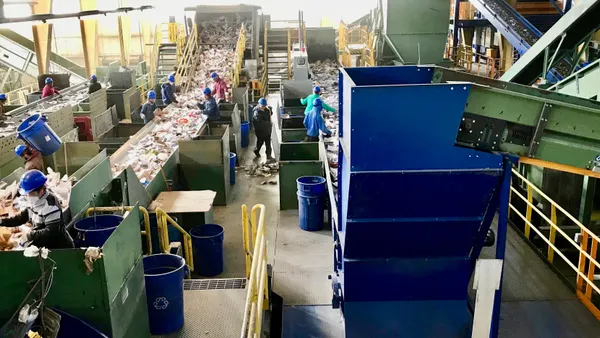Dive Brief:
- A new study published in the journal Food Quality and Preference by a team of researchers from Auburn University and Cornell University found that consumers may be more willing to waste food based on different date label language.
- Among four different date label types — "best by," "sell by," "fresh by" and "use by" — the study participants were most willing to waste food with a "use by" date.
- The study also found that larger package sizes and closer dates led to more potential food waste.
Dive Insight:
The researchers held an experimental auction in which 200 participants said how much they would be willing to pay for cereal, salad greens and yogurt with the four different date labels. Researchers also asked how much of the product the participants expected that their households would consume. Based on calculations from these results, participants had the highest willingness to waste salad greens and yogurt with the "use by" label as compared to the other three. For cereal, both "use by" and "fresh by" generated the highest willingness to waste.
"People have some expectation of wasting a product," Norbert Wilson, one of the study's co-authors and a professor at Auburn University, told Waste Dive. "As the date got closer to the date of the auction people were willing to pay less for it, but they were also willing to waste more of it."
Wilson said questions of how people interpret the labels weren't addressed and he plans to look at this in upcoming research. Previous research by the Harvard Food Law Policy Clinic has found that perceptions of quality and safety may play a role in consumer food waste. Better understanding how people react to different labels will be a big factor if Congress moves forward on a bill that aims to reform date label terminology.
Other recent research has found that consumers still aren't engaged or aware of the fact that up to 40% of food is wasted in the U.S. every year. The experimental economic approach of this auction study is a good step toward better understanding how money factors into consumer food waste and one to watch in the future.









